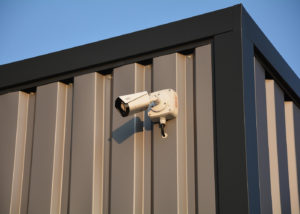Video surveillance on private property in the town of Wolmirstedt: owners must comply with data protection regulations

The Wolmirstedt public order office is receiving an increasing number of inquiries relating to private video surveillance of properties. This is not least due to the fact that private properties are increasingly being secured with cameras to prevent vandalism and break-ins.
However, private property owners have a few things to consider if they decide to have video surveillance of their property. For example, although video recordings on your own, solely used property are generally permitted, there are restrictions. In general, video surveillance is covered by the exercise of domestic authority, which is to be regarded as a legitimate interest within the meaning of Article 6(1)(f) of the European Union’s General Data Protection Regulation. However, the domiciliary right holder’s power of observation ends at the boundaries of their property.
This means that video surveillance may not extend to public spaces such as sidewalks, roads or parking lots, nor may it cover the neighbor’s property, other people’s private paths or other properties. Sound recordings are generally not permitted. In addition, video surveillance of a property must always be clearly identified: A notice about this – for example in the form of a sign – must be visible before entering the monitored area. A fine may be imposed for unauthorized video surveillance.
There are also special regulations for so-called video doorbells. Such doorbells may generally be set up, for example to clarify with the letter carrier how to drop off items. However, a video doorbell may only start recording when the person presses the doorbell. Permanent storage of the image recordings must be ruled out, and they may not show any more spatial information than would be possible, for example, by looking through a peephole. However, it is permissible if a motion detector detects movement and communicates this via a smartphone, for example.
Similar rules also apply to recordings with webcams, smartphones, dashcams, drones, wildlife cameras and others. It is irrelevant whether a camera is permanently mounted or freely movable and also whether the images are transmitted live to a monitor or recorded on video. Even if you use a dummy camera, you can expect claims for injunctive relief or damages because dummies can create surveillance pressure and thus violate personal rights.
If citizens suspect that they are being recorded by a neighbor’s video surveillance, they can submit a request for information to the camera operator. In this case, the operator is the data controller under data protection law. For reasons of proof, this should be done in writing. To assert the right to information, it is sufficient if the person concerned is of the justified opinion that they are affected by video surveillance. If the camera operator does not answer the request for information sufficiently or not at all, the data subject can contact the competent supervisory authority with a complaint about a suspected breach of data protection. This also applies in the event that, after the information has been provided, it becomes apparent that areas of the data subject’s own property or public areas are being recorded by the video surveillance without authorization.
The supervisory authority that deals with such matters is:
The State Commissioner for Data Protection of Saxony-Anhalt
Postal address: P.O. Box 1947, 39009 Magdeburg
Visitor address: Otto-von-Guericke-Str. 34a, 39104 Magdeburg
E-mail: poststelle@lfd.sachsen-anhalt.de
Phone: 0391 81803-0






